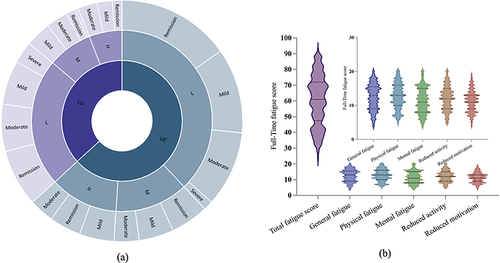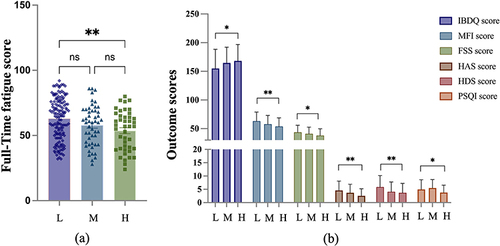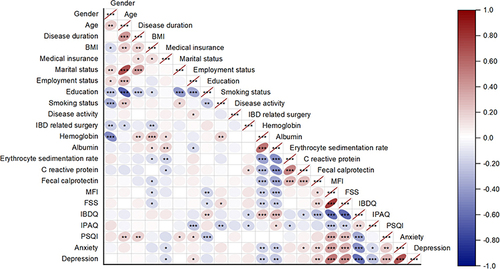Figures & data
Table 1 Demographic- and Disease-Related Characteristics of IBD Patients
Figure 1 (a) Percentage relationship between physical activity level, disease type and disease activity level. (b) Fatigue in IBD patients as measured by MFI scales.

Figure 2 (a) Fatigue scores of people with different physical activity levels. (b) Outcome scores for people with different physical activity levels.

Figure 3 Correlation analysis of 23 factors.

